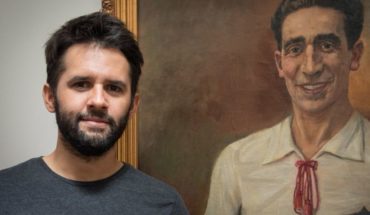Nine years after his murder, organizations will send on Monday an initial petition to the Inter-American Commission on Human Rights (IACHR) to seek justice internationally for Marisela Escobedo and Rubí Marisol Frayre Escobedo, mother and daughter who were murdered in various events in Chihuahua.
The organizations that will submit the document to the international body are: the Centre for Women’s Human Rights (CEDEHM), Center for Justice and International Law (CEJIL) and Mexican and Mexican in Exile (Mex-en-Ex) on behalf of family members both of them.
Read also >> The Peace Caravan pays tribute to Marisela Escobedo
Ruby Marisol Frayre Escobedo, was murdered in 2008 in Ciudad Juárez by Sergio Rafael Barraza, who was her romantic partner and who confessed the crime.
Her mother, Marisela Escobedo, was displaced and killed in front of the door of The Government Palace of Chihuahua in 2010 while demonstrating outside the site to be heard by the authorities.
The reasons for bringing both cases to international levels were the harassment, threats and femicide suffered by Marisela, who part of her life was dedicated to seeking justice for her daughter.
According to the organizations responsible for the petition, in both cases there was impunity on the part of justice and the reparation of harm never reached the relatives of women who were not protected by the Government of Chihuahua.
Lee >> Judges will be prosecuted who released the killer from Marisela Escobedo’s daughter
The petition details the context in which both acts were committed, the acts violating and refers to the exhaustion of remedies by the Mexican State, and accuses the authorities of human rights violations.
It is also noted that both incidents are a sign of the social vulnerability experienced by women and a presence of organized crime in Mexico.
What do you ask of the IACHR?
As part of the petitions, Mexico is called upon to be held internationally responsible for the violation of the human rights of Rubí Marisol Fraire Escobedo for not guaranteeing with preventive measures its right to life and a life free from violence.
The State is also called responsible for its mother and activist, Marisela Escobedo Ortiz, not receiving the effective resources that would guarantee access to justice, investigation, truth, sanction and comprehensive redress in relation to violence, disappearance and femicide suffered by her daughter Ruby.
Another request is that victims be repaired in accordance with international law.
Lee >> Light candles in memory of Marisela Escobedo and Susana Chavez
The murder of Ruby Marisol
Ruby Marisol Frayre Escobedo, had a romantic relationship with Sergio Rafael Barraza Bocanegra, his aggressor. She was last seen by her mother on 22 August 2008, but the complaint was filed until January of the following year, a procedure in which the mother was re-victimized and rejected more than once “for lack of evidence”.
On 16 June 2009, Barraza was arrested in Zacatecas and taken to Ciudad Juárez for the crime of detention of minors.
Sergio described to authorities that he argued and beat Ruby, knocking her unconscious. He also detailed how he went to his parents’ house to order his stepfather’s Ford Van and take the body to a place where there are some marraneras, near a light tower and a thermoelectric plant.
On 18 June 2009, authorities traced in a dumpster and located 38 charred, scrambled skeletal skeletal remains with pig bones. Subsequently, forensic genetic testing confirmed that they were remains of Ruby.
On 29 April 2010, the Court of Oral Trial unanimously acquitted Sergio Rafael Barraza and his release was ordered.
Read >> “Disappear” the judges in the Marisela Escobedo case
After learning about this decision, Marisela and her relatives continued to protest for justice. On 20 May 2010, the previous procedure was invalidated and Sergio Rafael is determined to be criminally responsible for The murder of Rubí. The Court of Trial ordered that an individualization of sanctions and immediate apprehension hearing stake will be held.
Marisela made countless efforts to enforce the arrest warrant (including marches and traces), without success even though she had located him in Fresnillo, but the authorities did not coordinate properly and Sergio Rafael escaped by one of the windows of the house.
In mid-August 2010, Marisela and his brother Héctor Escobedo moved to Fresnillo, Zacatecas, to continue the investigation of Sergio Barraza’s whereabouts, and rented a house near the home of Sergio’s sentimental couple.
According to data from the authorities, on 16 November 2012, in Zacatecas, in a confrontation with the Fifty-third Infantry Battalion of the Army, Sergio Barraza was killed along with three other men.
The murder of Marisela Escobedo
The murder of Marisela Escobedo is due to the inaction of the mexican state authorities and the poor response to their requests regarding the location of Sergio Barraza, the organizations in the document that will be presented to the IACHR argue.
On December 8, 2010, after interviewing with the officials, Marisela set up a camp on the “Clavos Cross NI ONE MORE” in the City of Chihuahua, and declared, “I’m not moving from here until my daughter’s killer is arrested.”
There, on December 16, 2010, she was killed, after a subject descended from a car and after chasing her down the street was hit by the assailant, who shot her in the head in front of Government Palace and 150 yards from the main offices of the Prosecutor’s Office General of the State (FGE).
The murderer fled in the same car he arrived in, which was waiting for him a few feet from the place. On December 15, 2011, the FGE publicly announced that “El Clown” was identified as Héctor Flores Morán, the material author of the murder who had been shot dead and died in hospital on September 7, 2011.
On October 4, 2012, in Chihuahua, José Enrique Jiménez Zavala, alias “El Wicked”, was arrested by the police woman, who was accused of being the intellectual author of the murder. He was linked to the process seven days later and killed in January 2015 in his cell located in the maximum security pavilion of the Cereso de Aquiles Serdán, Chihuahua.
What we do in Animal Político requires professional journalists, teamwork, dialogue with readers and something very important: independence. You can help us keep going. Be part of the team.
Subscribe to Animal Politician, receive benefits and support independent journalism.#YoSoyAnimal
translated from Spanish: NGOs to seek justice for Marisela Escobedo before IACHR
June 24, 2019 |





